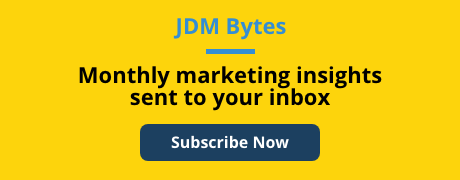LinkedIn recently rolled out a new tool for creating custom-intent conversions and retargeting audiences: Website Actions. Located under Analyze in the left-hand navigation bar, Website Actions allows advertisers to create conversions and audience buckets based on custom sets of actions taken on the website.
With reports of LinkedIn ads gaining engagement (and increasing in costs), I see these as important releases. Let’s look at how they might work – and the significance they carry for improving LinkedIn ads’ viability in brand advertising portfolios.

5 Ways to use LinkedIn’s Website Actions
Right away, you can sketch out a few powerful use cases for the feature.
These include:
- Grouping landing page engagement like visits and button clicks to create custom intent audiences and conversions
- Using high-intent button clicks and page engagement to create audiences who are ready to take down-funnel action
- Gauging how campaigns are contributing to these different action sets to better understand performance and optimize budget and ads accordingly
- Creating different sets of intent-based buckets to measure more steps of the funnel and better understand your user’s journey
- Using audiences for targeting exclusions to ensure ads are being served to users at the right stage of the funnel
In general, the takeaway here is that Website Actions give advertisers on LinkedIn more capability to identify, target, and track users depending on their intent. As a full-funnel approach becomes increasingly more important for the user journey, these audience buckets will help ensure that users are being served the right ads depending on their stage of the funnel, and are being retargeted according to their behavior and intent.
The significance of the release
This isn’t necessarily earth-shattering, but with Google slow to innovate for B2B marketers these days, it’s a promising move in the right direction for LinkedIn to gain prominence and grab more B2B advertising budget.
LinkedIn’s hurdles have always been high CPCs/CPMs and the challenge of attributing value to user engagements in the elongated B2B sales cycle, which rarely produces easy-to-measure direct response. The ability to target and track more granularly should equate to higher quality leads, which in my opinion justifies the higher cost of advertising on the platform.
What’s next?
If you’re already running LinkedIn campaigns, start testing these immediately! I’d recommend making it a priority to create the conversions and apply them to active campaigns to gauge how they track against existing conversions (they should theoretically have the same or higher volume depending on what actions are being tracked).
I’d also recommend creating the audiences immediately so they can start building, and testing them as soon as they’re big enough. This seems like a more streamlined approach to setting up custom conversions and audiences, so learning how to use this new tool sooner than later can potentially save time in the long run.
If you’re not already running LinkedIn campaigns, consider this good food for thought for moving resources in that direction. Assuming you have good enough data on your ideal audience to take advantage of LinkedIn’s unique targeting capabilities, Website Actions might be the push you need to diversify your spend.
If you need any support or resources to help tune up (or set up) LinkedIn campaigns that move high-quality leads into your funnel and through the purchase journey, reach out! We’d love to talk.
